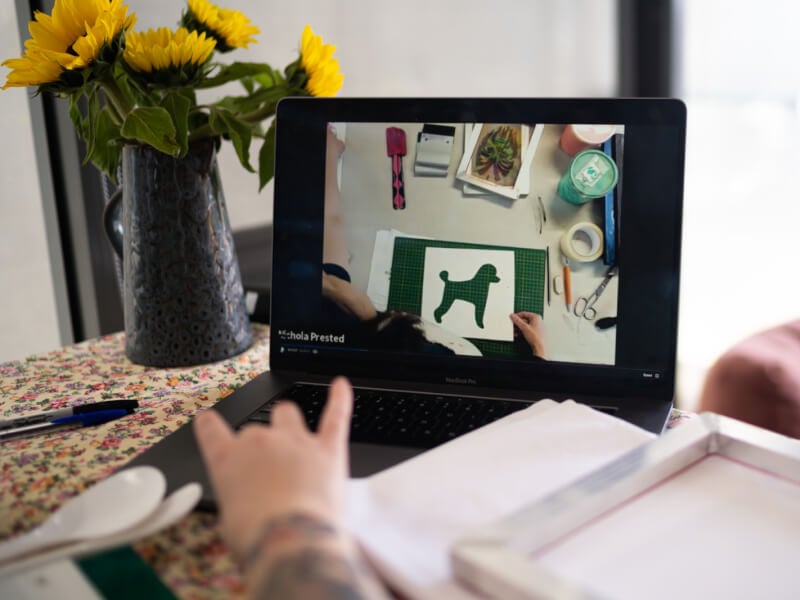If you’ve spent the past two years working from your dining room, there’s a good chance your work-life boundaries have become a little blurry…
Daily meals and Zoom meetings take place at the same table, blazers have given way to pyjama bottoms and the comfy couch that’s usually reserved for movie marathons has become a prime spot for brainstorming sessions. In short, our homes are no longer the deadline-free sanctuaries they once were. Instead, they’re a hybrid of work, life and play. And while this new reality comes with some benefits, if not carefully managed, blurred work-life boundaries can quickly lead to burnout.

A survey conducted by the Harvard Business Review found that, since the beginning of the COVID-19 pandemic, work-life wellbeing had declined for the majority of participants. Of the 1,500 people who took part, 89% reported a decline in work-related wellbeing, with 56% of those respondents saying increased work demands were to blame. Notably, 25% cited a loss of work-life separation.
Statistics like this certainly make us sit back and wonder: is it possible to enjoy all of the perks of remote working (no commute, no lunch prep and greater flexibility) without sacrificing our home life, general wellbeing and job satisfaction? Can we really prevent burnout and achieve that coveted sense of work-life balance?
While there’s no magic recipe when it comes to WFH, one thing is true: we need to build better boundaries – and actually stick to them.
The tangible benefits of boundaries
Around the world, researchers have shown great interest in the issue of workplace boundaries, and their findings reveal what many of us already suspected to be true: managing work-life boundaries not only reduces work-related conflicts but also relieves stress, reduces the likelihood of burnout, addiction and other unhealthy coping mechanisms, and improves overall mental and physical wellbeing. The benefits of work-life boundaries are undisputed, but what does boundary-setting actually look like in the real world?
How to build better boundaries
By simply making a few small (yet consistent) behavioural changes, you can maintain firm boundaries that benefit your overall wellbeing.
Physical boundaries
Implementing physical boundaries is exactly what it sounds like – creating physical space between yourself and the work you do. This could be something as simple as...
-
Packing up your laptop when you finish for the day
-
Turning your phone onto “do not disturb” mode
-
Keeping technology out of the bedroom
-
Closing the door to your home office (and keeping it closed) until you log on again the next morning
Notably, physical boundaries aren’t just a means of preventing burnout, but can also be used to maximise productivity. For example, you might kindly ask your partner, children or housemates not to come into your space during hours to avoid distracting chatter, leaving you more available for conversation when you clock off.

Emotional and psychological boundaries
Emotional and psychological boundaries are arguably some of the hardest barriers to set in place, simply because they aren’t tangible. While it’s clear when we cross a self-imposed physical boundary (like working from bed despite making it a dedicated tech-free zone), emotional and psychological boundaries are easily forgotten, and therefore, easily overstepped. Building stronger internal boundaries might mean...
-
Learning to say “no” in order to protect your priorities and your energy, even if you’ve gained more “free time” since working from home
-
Making a conscious effort not to let an argument with your partner, housemate or child negatively impact your interactions with your colleagues
-
Politely declining a midday meeting in favour of your daily lunchtime walk
-
Making a nourishing meal in order to mentally detach from the working week
No longer a novel chapter in our lives, WFH is the new normal for the millions of employees worldwide who enjoy the flexibility and freedom that this style of working affords. By proactively putting work-life boundaries in place (and regularly revisiting them) we can better protect ourselves from burnout, respect our relationships (both personal and professional), and ultimately, make WFH work for us.






































